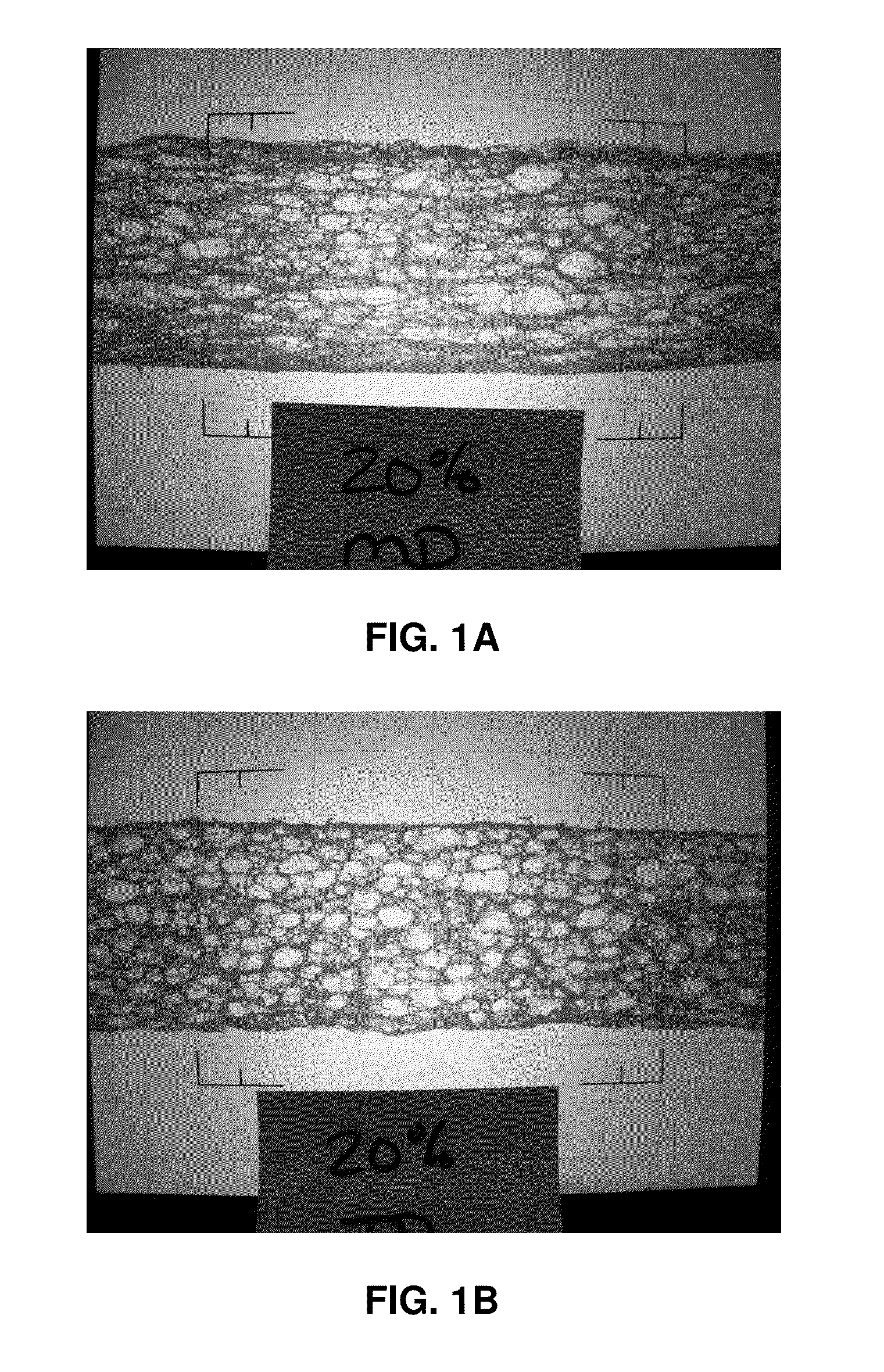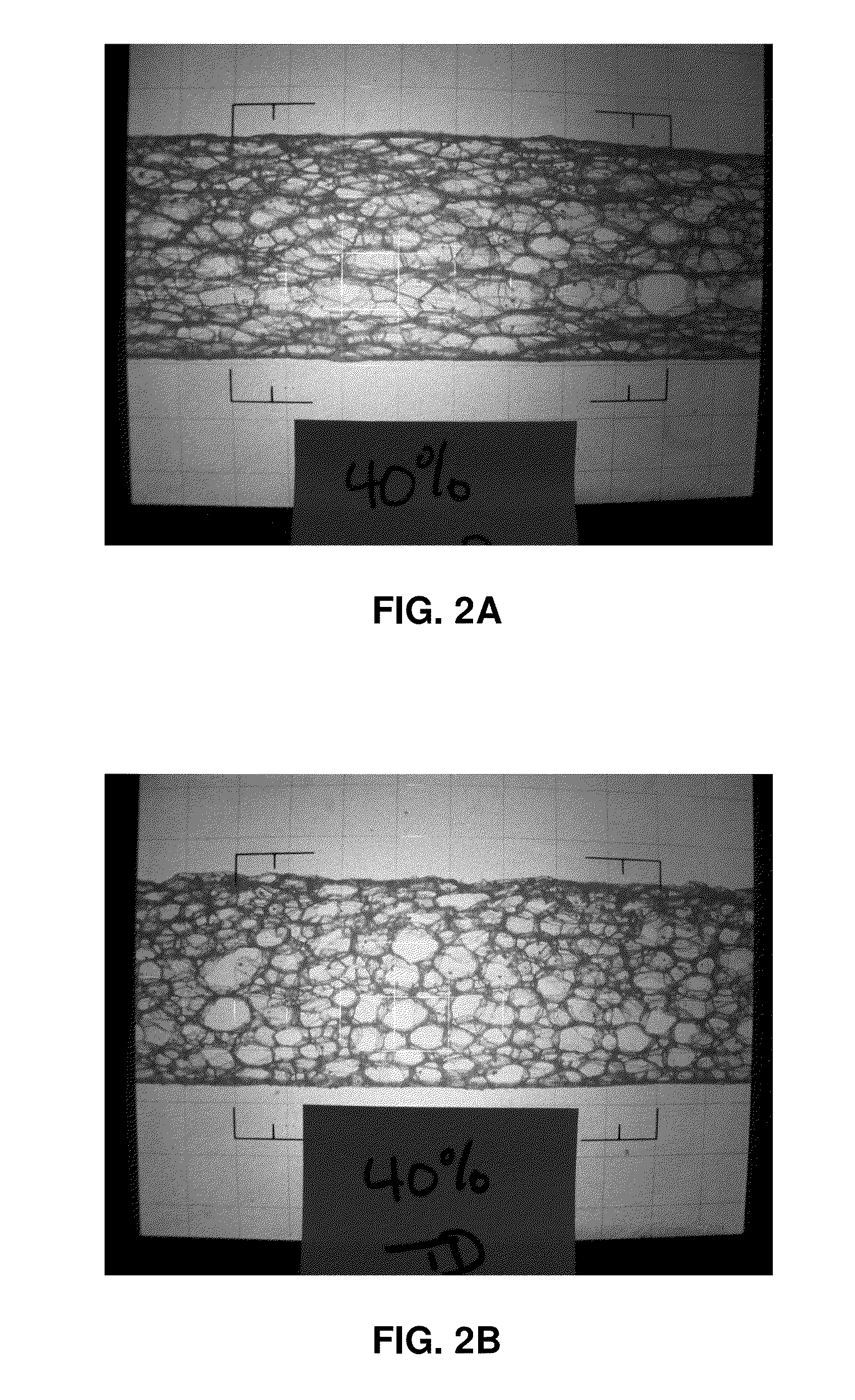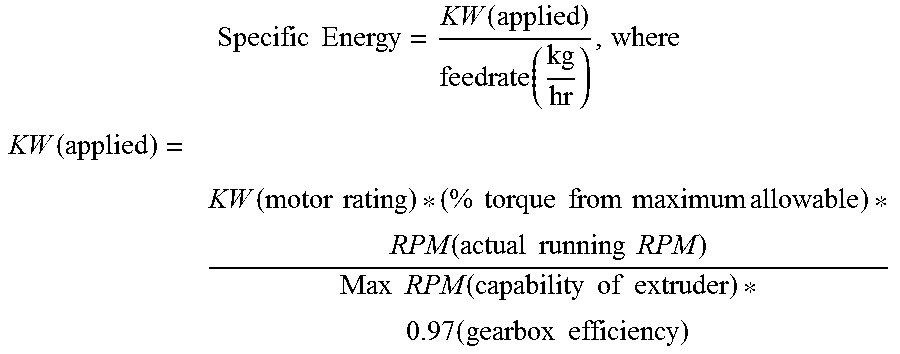Methods of producing foam structures from recycled metallized polyolefin material
a technology of metallized polyolefin and foam structure, which is applied in the direction of transportation and packaging, flooring, synthetic resin layered products, etc., can solve the problems of not readily recycling plastic waste into commercially viable new products, limited methods, and few uses of unseparated metallized polyolefin materials, so as to reduce manufacturing costs, avoid landfill expenditure, and reduce the carbon footprint
- Summary
- Abstract
- Description
- Claims
- Application Information
AI Technical Summary
Benefits of technology
Problems solved by technology
Method used
Image
Examples
example 1
[0115]A commercial pulverized LLDPE having an MFI of 6.8 g / 10 min (190° C., 2.16 kg), a commercial reactor flake polypropylene-ethylene copolymer having an MFI of 1.5 g / 10 min (230° C., 2.16 kg), a masterbatch containing zinc oxide, a masterbatch containing a standard polyolefin anti-oxidant package, and divinylbenzene were mixed together and fed into a co-rotating twin screw extruder. Simultaneously, tubes of compounded recycled aluminum metalized polypropylene film, azodicarbonamide, and standard polyolefin extrusion processing aid were fed thru other ports on the extruder. The tubes of recycled metalized polypropylene were cylinders of about 3 mm×2.5 mm OD×0.8 mm wall thickness and extrusion compounded from shredded film coated with about 0.02-0.05 μm of aluminum. The three resins were fed into a co-rotating twin screw extruder at 60% LLDPE, 20% polypropylene-ethylene copolymer, and 20% recycled aluminum metalized polypropylene film.
[0116]After extrusion at a specific energy of 0...
example 2
[0117]A commercial pulverized LLDPE having an MFI of 6.8 g / 10 min (190° C., 2.16 kg), a commercial reactor flake polypropylene-ethylene copolymer having an MFI of 1.5 g / 10 min (230° C., 2.16 kg), a masterbatch containing zinc oxide, a masterbatch containing a standard polyolefin anti-oxidant package, and divinylbenzene were mixed together and fed into a co-rotating twin screw extruder. Simultaneously, tubes of compounded recycled aluminum metalized polypropylene film, azodicarbonamide, and standard polyolefin extrusion processing aid were fed thru other ports on the extruder. The tubes of recycled metalized polypropylene were cylinders of about 3 mm×2.5 mm OD×0.9 mm wall thickness and extrusion compounded from shredded film coated with about 0.02-0.05 μm of aluminum. The three resins were fed into a co-rotating twin screw extruder at 55% LLDPE, 5% polypropylene-ethylene copolymer, and 40% recycled aluminum metalized polypropylene film.
[0118]After extrusion at a specific energy of 0....
PUM
| Property | Measurement | Unit |
|---|---|---|
| specific energy | aaaaa | aaaaa |
| thickness | aaaaa | aaaaa |
| acceleration voltage | aaaaa | aaaaa |
Abstract
Description
Claims
Application Information
 Login to View More
Login to View More - R&D
- Intellectual Property
- Life Sciences
- Materials
- Tech Scout
- Unparalleled Data Quality
- Higher Quality Content
- 60% Fewer Hallucinations
Browse by: Latest US Patents, China's latest patents, Technical Efficacy Thesaurus, Application Domain, Technology Topic, Popular Technical Reports.
© 2025 PatSnap. All rights reserved.Legal|Privacy policy|Modern Slavery Act Transparency Statement|Sitemap|About US| Contact US: help@patsnap.com



